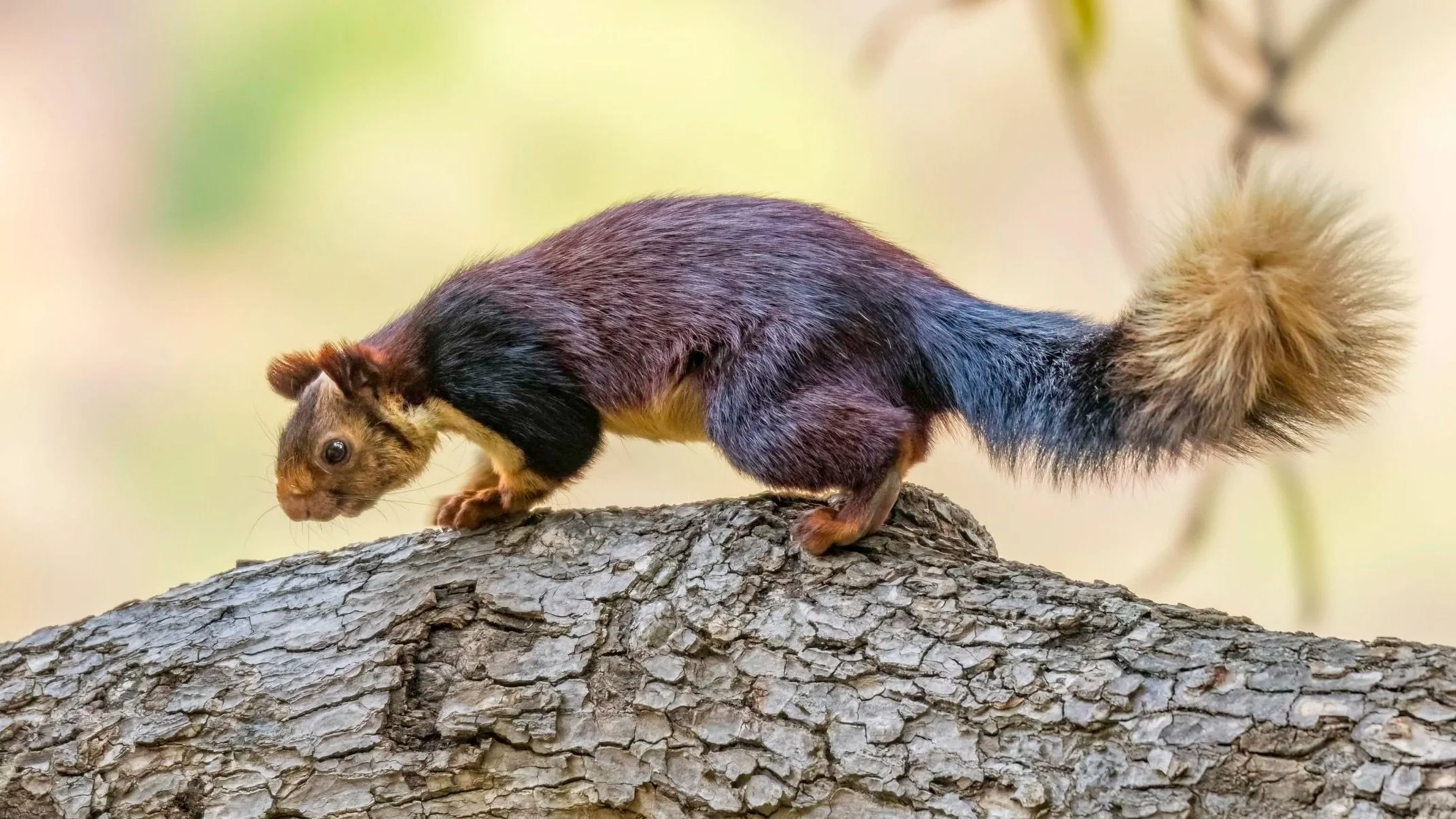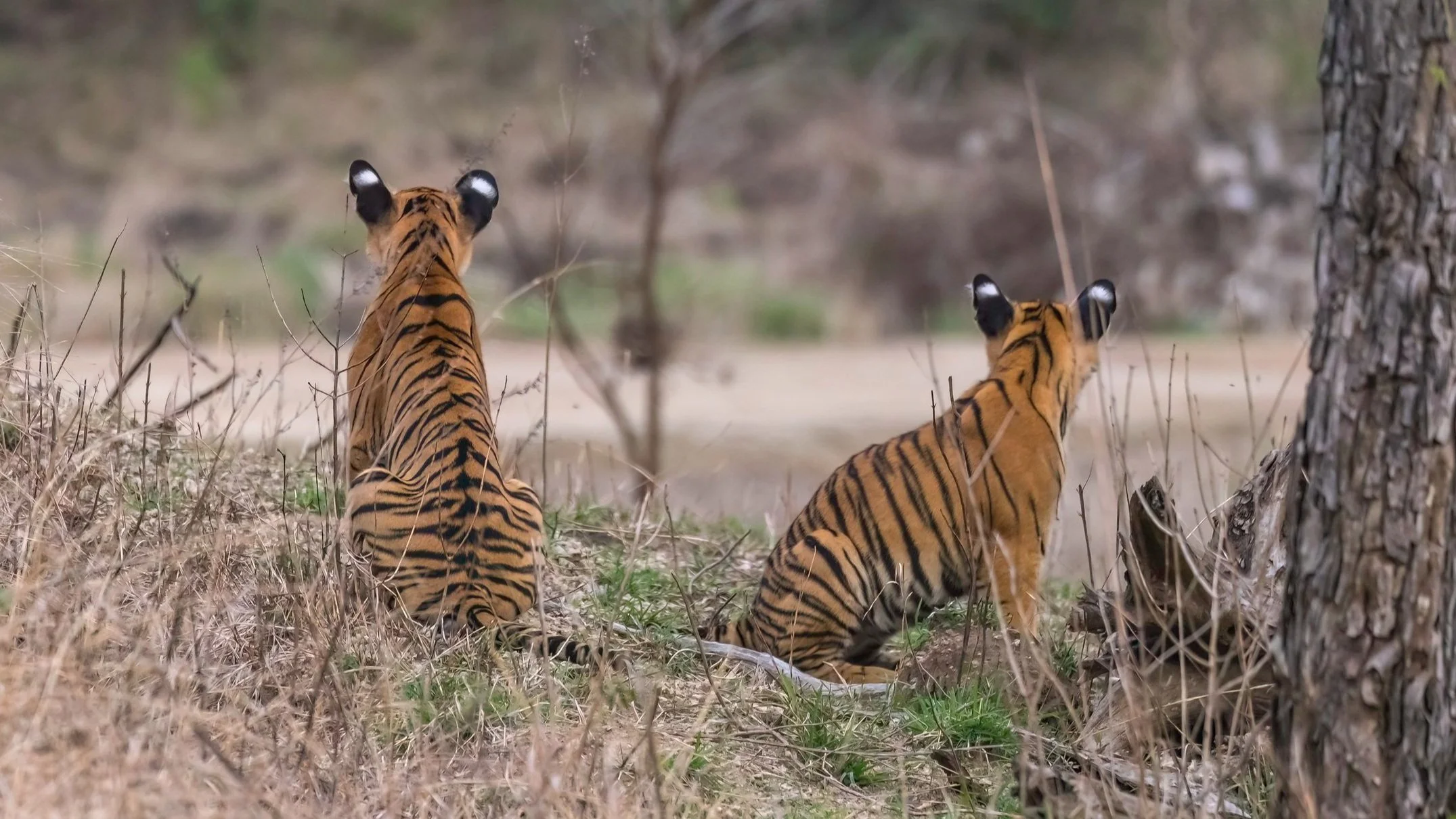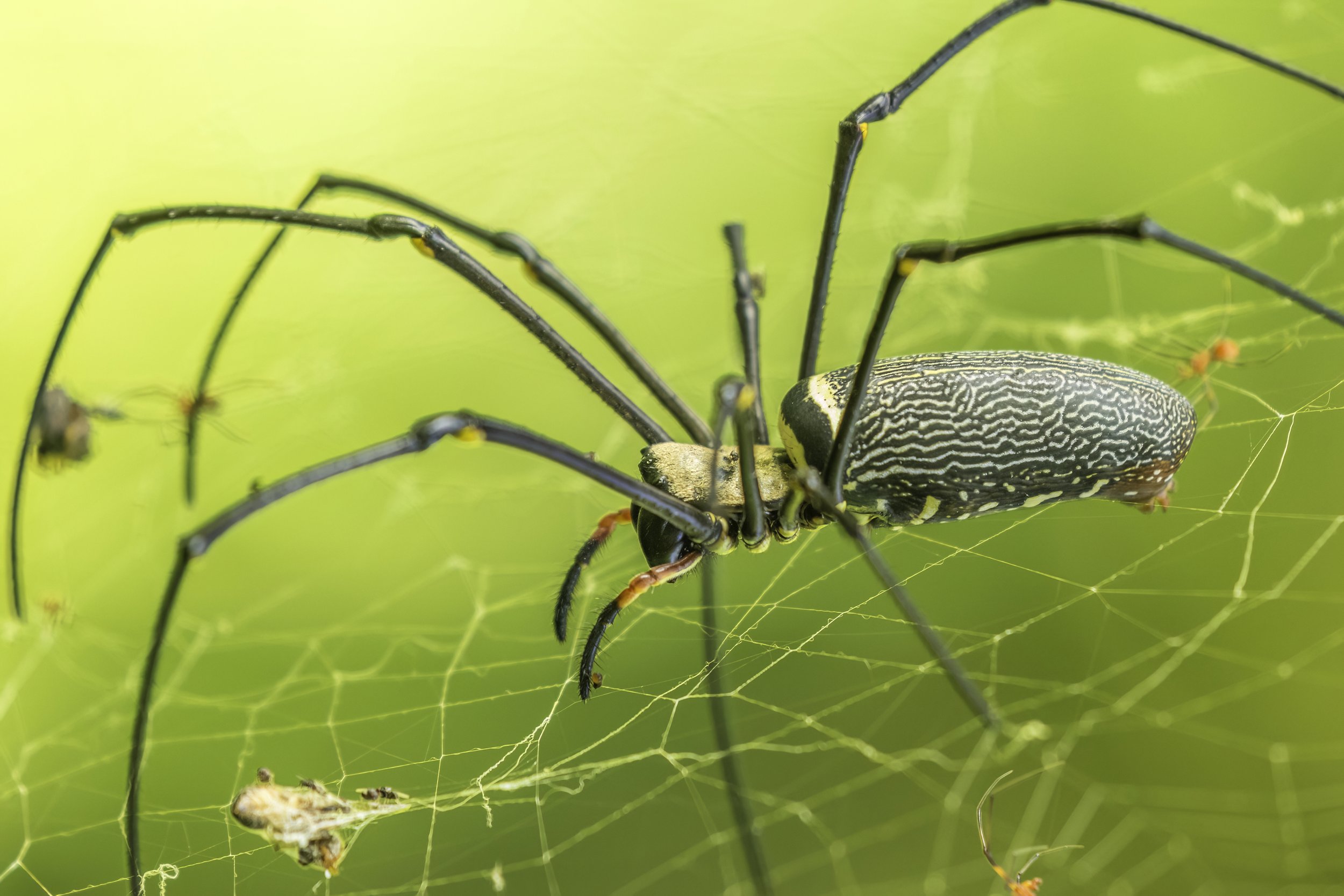Malabar Giant Squirrel
The Malabar Giant Squirrel (Ratufa indica) is a large herbivorous diurnal, arboreal rodent endemic to India’s forests. One of the three giant squirrel species found in the country, the Malabar/ Indian Giant Squirrel is characterised by its rufous-brown/purple colour and its ability to quickly jump from one tree to another. They can be seen either hanging down from the canopy, flat against the tree trunk, or scuttling about the branches, their tails bobbing as they do so.
#wildartworks, #canon, #CanonWildlife, #naturephotography, #TelanganaWildlife, #umamaheshwaram, #achampet, #indiangiantsquirrel, #malabargiantsquirrel, #squirrel, #rodent,
Celebrating International Tiger Day
Imagine a world without tigers! No regal stripes cutting through the jungle, no powerful roars echoing across the grasslands, no piercing amber eyes watching from the shadows. This isn’t just a grim fantasy - it is a future we’re racing towards - but today, July 29th, we are fighting back
Welcome to the International Tiger Day, 2025!
#wildartworks, #Canon, #conservationphotography, #yesbbcearth, #wildlifeonearth, #bbcearth, #natgeowild, #natgeoindia, #india, #telanganabirds, #kawaltigerreserve, #amrabadtigerreserve, #nagarjunasagarsrisailamtigerreserve, #hyticos, #tigerconservation, #internationaltigerday, #internationaltigerday2025, #tigerdaycelebrations, #tigerdayevent, #glandpharma, #telanganastateforestdepartment, #tsfd,
Grey-headed Swamphen
A very large bluish-purple waterbird with a red bill and forehead shield, as well as red legs and feet with long toes. The tail is flicked up often, revealing fluffy white “underpants.” Juveniles are duller than adults and lack the red bill and shield. An inhabitant of marshy, vegetated freshwater bodies such as swamps, rivers, and lakes; usually in small groups. Feeds, often clumsily, at muddy water edges, in reeds, and on floating vegetation. Makes short nasal grunts and croaking sounds. Formerly part of the species known as Purple Swamphen.
#wildartworks, #Canon, #Bird, #Birdinginthewild, #BirdWatching, #Wildlife, #WildBirds, #naturephotography, #your_best_birds, #planetbirds, #earthcapture, #photo_pond, #earthpix, #naturyst, #conservationphotography, #yesbbcearth, #wildlifeonearth, #bbcearth, #natgeowild, #natgeoindia, @globalcapture, #india, #telanganabirds, #kawaltigerreserve, #hyticos
Tickell’s Blue Flycatcher
The Tickell’s Blue is an attractive medium-sized flycatcher with blue upperparts and orange-and-white underparts, with the most orange on the chest and the throat. Its smaller-billed profile, less extensive orange, and paler face distinguish this species from the male Hill-Blue Flycatcher. Extensive orange on the throat separates Tickell’s from Blue-throated Flycatcher. It favors open hill forests as well as forest edges, particularly in drier, scrubby areas, often close to water. Both sexes give a pleasant high-pitched tinkling song.
#wildartworks, #Canon, #Bird, #Birdinginthewild, #BirdWatching, #Wildlife, #WildBirds, #naturephotography, #your_best_birds, #planetbirds, #earthcapture, #photo_pond, #earthpix, #naturyst, #conservationphotography, #yesbbcearth, #wildlifeonearth, #bbcearth, #natgeowild, #natgeoindia, @globalcapture, #india, #umamaheshwaramtemple, #achampet, #flycatcher, #tickellsblueflycatcher, #telanganabirds, #oldworldflycatcher, #nallamallaforest, #ananthagiri, #ananthagiriforestrange, #kawaltigerreserve, #hyticos
Gray Junglefowl/ Sonnerat's Junglefowl
The Gray Junglefowl, also known as Sonnerat's Junglefowl, is one of the wild ancestors of the domestic chicken together with the Red Junglefowl and other junglefowls. The species epithet commemorates the French explorer Pierre Sonnerat.
#wildartworks, #wildlifephotography, #jungle, #Wild, #forest, #Wildlife, #conservationphotography, #wildlifeonearth, #bbcearth, #natgeowild, #natgeoindia, #Kabini, #Pench, #Tadoba, #tipeshwar, #GrayJunglefowl, #junglefowl, #fowl, #SonneratsJunglefowl,
Red Junglefowl
This “original chicken” is smaller than its domestic descendants, and is widespread throughout South & Southeast Asia and can also be found as an introduced species in many regions around the world (especially prevalent on many Pacific Islands, including Hawaii). In its introduced range and some areas of its native range it has interbred widely with feral and domestic chickens, producing intermediate hybrids. Many of these birds cannot be distinguished from genuine wild-type birds. Within native range calls are useful for ID: the wild male’s crowing is hoarse and choked off towards the end, unlike the loud, vibrant calls of the domestic rooster.
#wildartworks, #wildlifephotography, #jungle, #Wild, #forest, #Wildlife, #conservationphotography, #wildlifeonearth, #bbcearth, #natgeowild, #natgeoindia, #windsornaturetrail, #Kabini, #pench, #Tadoba, #tipeshwar, #BishanAngMoKio, #KaengKrachan, #redJunglefowl, #junglefowl, #fowl, #pheasant,
Eurasian Hoopoe
An unmistakable cinnamon coloured bird with a zebra-striped wings, a Chinese fan of a crest (usually held closed, but often raised just after landing), and a rapier of a bill. The hoopoe favours semi-open habitats such as heathland, farmland, orchards, grassy lawns, where it feeds on the ground, probing with its long bill for insects.
#wildartworks, #wildlifephotography, #kabini, #jungle, #Wild, #nagarholetigerreserve, #nilgiribiosphere, #nagarhole, #kabinibackwaters, #conservationphotography, #indian_wildlifes, #indianwildlifeofficial, #wildlifeonearth, #bbcearth, #natgeowild, #natgeoindia, #nammakarnataka, #tipeshwar, #Tadoba, #tadobaandharitigerreserve, #yawatmal, #penchnationalpark, #pench, #telanganabirds, #Manjeera, #AmeenpurLake, #ananthagiriforest, #NarsapurForest, #bhigwanbirdsanctuary
Giant Golden Orb Weaver/ Giant Wood Spider
Nephila is a genus of araneomorph spiders noted for the impressive webs they weave. Nephila consists of numerous species found in warmer regions around the world, although some species formerly included in the genus have been moved to Trichonephila. The name Giant Wood Spider is used to refer mainly to Nephila pilipes, which is very often seen, owing to its size and needless to say the size of its web. This is a common spider in the jungles of peninsular India, where webs built across large open spaces (and at times spanning up to 2 meters) are not uncommon. They are also called the Giant Golden Orb Weaver. Often, the webs of all these Golden Orb Weavers are inhabited by kleptoparasites. As a group, they also exhibit extreme male dwarfism and female gigantism.
#wildartworks, #Canon, #Wildlife, #naturephotography, #earthcapture, #earthpix, #naturyst, #conservationphotography, #yesbbcearth, #indian_wildlifes, #indianwildlifeofficial, #wildlifeonearth, #bbcearth, #natgeowild, #natgeoindia, @globalcapture, #giantwoodspider, #goldenorbweaver, #giantgoldenorbweaver, #nephilapilipes, #nephila, #spider, #woodspider, #goldensilkorbweavers, #goldenorbweavers, #giantwoodspiders, #banana spiders,









